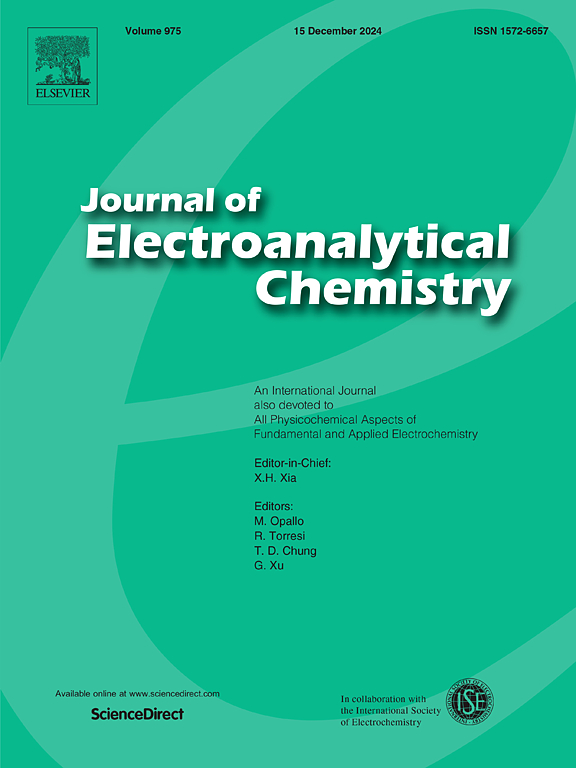Mitigating effects of heavy metal ions in wastewater with enhanced stability in hydrogen generation
IF 4.1
3区 化学
Q1 CHEMISTRY, ANALYTICAL
引用次数: 0
Abstract
For sustainable green hydrogen production, it is crucial to prioritize water-energy nexus, especially in water-scarce regions where it is challenging to deploy distilled water for electrolysis. We herein utilized heavy metal wastewater (HMWW) for H2 generation (HER) but by first eliminating the heavy metal ions using membrane distillation (MD). As HM ions significantly interfere in HER (especially Cu), it is mandatory to utilize techniques such as MD that offer high rejection rate with low energy consumption to provide high quality treated water. The MD-treated water (permeate) was then explored as a water source in electrolyte with Pt/C as commercial HER electrode displayed a 14% decrease in HER overpotential with a 5 Ω decrease in charge transfer resistance in comparison to untreated wastewater (HMWW-feed). The initial studies indicated superior HER performance of permeate over HMWW-feed, probing comprehensive long-term HER electrochemical investigation to observe the prolonged impact of HM ions. From our observations amongst other HM ions in feed, particularly the exposure of Copper (Cu) ions, leading to electrodeposition on Pt/C electrode significantly deteriorated the electrochemical performance. The continuous exposure and electrodeposition of Cu on the Pt/C electrode declined the electrochemical active surface area (ECSA) by 75% in 72 h, leading to a 97% drop in the electrochemical stability of HER activity. On using MD-treated water (permeate), the electrode achieved a stability of 78%, approaching the HER performance of DI water as a water source (98.4%) post 72 h. The impact of HM ions was also reflected in the Faradic efficiency values for H2 evolution that improved by 26% on using treated wastewater (permeate) instead of HMWW-feed. Therefore, leveraging MD-treated wastewater as a water source can facilitate the emergence of new sustainable solutions for H2 generation with a low water footprint.

求助全文
约1分钟内获得全文
求助全文
来源期刊
CiteScore
7.80
自引率
6.70%
发文量
912
审稿时长
2.4 months
期刊介绍:
The Journal of Electroanalytical Chemistry is the foremost international journal devoted to the interdisciplinary subject of electrochemistry in all its aspects, theoretical as well as applied.
Electrochemistry is a wide ranging area that is in a state of continuous evolution. Rather than compiling a long list of topics covered by the Journal, the editors would like to draw particular attention to the key issues of novelty, topicality and quality. Papers should present new and interesting electrochemical science in a way that is accessible to the reader. The presentation and discussion should be at a level that is consistent with the international status of the Journal. Reports describing the application of well-established techniques to problems that are essentially technical will not be accepted. Similarly, papers that report observations but fail to provide adequate interpretation will be rejected by the Editors. Papers dealing with technical electrochemistry should be submitted to other specialist journals unless the authors can show that their work provides substantially new insights into electrochemical processes.

 求助内容:
求助内容: 应助结果提醒方式:
应助结果提醒方式:


